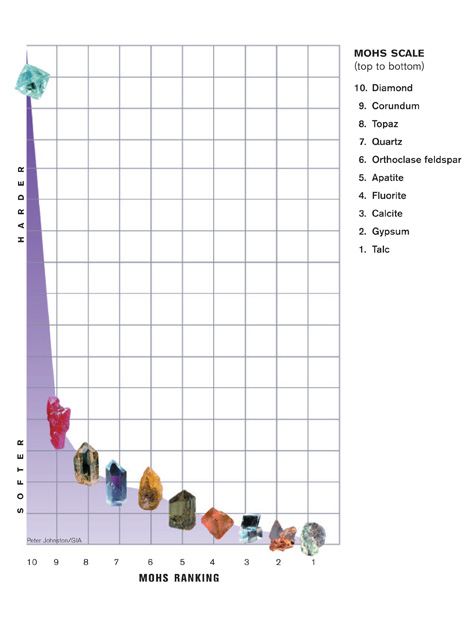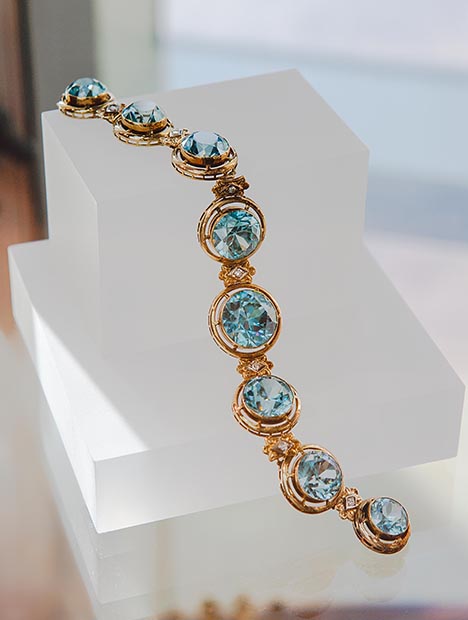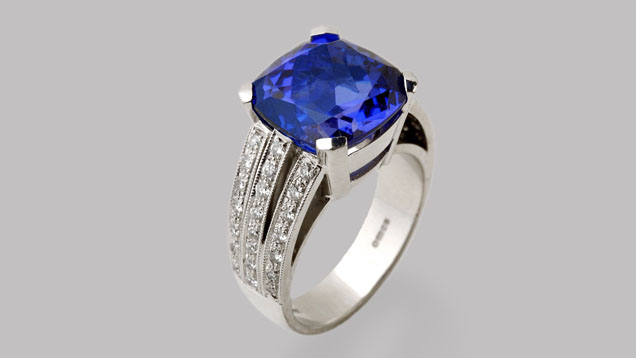Source 1: https://www.gia.edu/tanzanite-care-cleaning
Source 2: https://www.gia.edu/zircon-care-cleaning
Source 3: https://www.gia.edu/turquoise-care-cleaning
Turquoise Care and Cleaning Guide

Hardness and toughness
Gem and mineral hardness is measured on the Mohs scale. The numbers are based on the relative ease or difficulty with which one mineral can be scratched by another. But the Mohs scale is deceptive. The steps between the minerals are not evenly spaced. For example, diamond is only one number away, but it’s many times harder than gems in the corundum family.
Turquoise ranks 5 to 6 on the Mohs scale and its toughness is generally Fair to Good.
Stability
Turquoise is generally stable to light, but high heat can cause discoloration and surface damage. It dissolves slowly in hydrochloric acid, and it can be discolored by chemicals, cosmetics, and even skin oils or perspiration.
Cleaning
It’s safe to clean turquoise jewelry with warm, soapy water, but it should never be cleaned with steam or ultrasonic cleaners. Some turquoise is treated to improve its surface appearance. Heat or solvents can damage the treated surfaces.
Zircon Care and Cleaning Guide

Hardness and toughness
Gem and mineral hardness is measured on the Mohs scale. The numbers are based on the relative ease or difficulty with which one mineral can be scratched by another. But the Mohs scale is deceptive. The steps between the minerals are not evenly spaced. For example, diamond is only one number away, but it’s many times harder than gems in the corundum family.
Zircon is rated 6 to 7.5 on the Mohs scale. It has fair to good toughness. While zircon is not as hard or tough as a stone like sapphire, it can still be worn in all types of jewelry as long as proper care is given to avoid rough wearing or hard blows. Also, zircon can be brittle, so it should be worn and stored in a manner that avoids hard rubbing against other materials.
Stability
Zircon is generally stable when exposed to light, but some heat-treated stones might revert back to their original colors (usually light brown) after prolonged exposure to bright light. Heat can alter the color of some zircon. Zircon is stable when exposed to chemicals.
Cleaning
Warm, soapy water is recommended for cleaning zircon. Ultrasonic and steam cleaners are not recommended for cleaning this gem.

that could cause abrasions. – Courtesy Sarah & Leonard Friedman
Treatment concerns
Zircon is commonly heat-treated to produce blue and colorless varieties. As with any transparent gemstone, zircon can be fracture-filled to improve apparent clarity, but this treatment is rarely applied to this gem.
Tanzanite Care and Cleaning Guide

Hardness and toughness
Gem and mineral hardness is measured on the Mohs scale. The numbers are based on the relative ease or difficulty with which one mineral can be scratched by another. But the Mohs scale is deceptive. The steps between the minerals are not evenly spaced. For example, diamond is only one number away, but it’s many times harder than gems in the corundum family.

Zoisite (tanzanite) is 6 to 7 on the Mohs scale. It has fair to poor toughness and a property called cleavage, which is a tendency to break when struck. While tanzanite is not as hard or as tough as a stone like sapphire, it still can be worn in all types of jewelry with proper precautions against rough wearing or hard blows.
Stability
Tanzanite is stable under normal wearing conditions, which means it’s resistant to the effects of heat, light, and common chemicals. Even so, tanzanite should not be subjected to very high temperatures or sudden temperature changes. It can be attacked by exposure to hydrochloric and hydrofluoric acids.
Cleaning
Warm, soapy water is always safe. Ultrasonic and steam cleaners are never recommended for tanzanite
Treatment and durability considerations
Tanzanite is routinely heat-treated to modify its color from a predominately brownish appearance to a predominately blue to purple appearance. The treatment is stable with no additional durability concerns.
There have been instances where tanzanite was coated to modify the color. Although rarely done, the coatings are not permanent and can be scratched or damaged through normal wear.
Like other transparent gemstones, tanzanite can be fracture filled to improve apparent clarity, although this is an uncommon tanzanite treatment method. The materials used to fill fractures in gemstones can alter in appearance over time.


